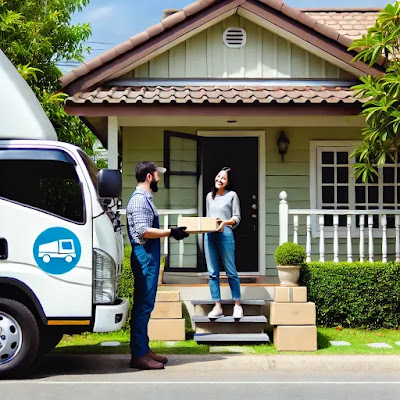The last mile of delivery is the most crucial part of the supply chain, as it directly impacts customer satisfaction and brand perception. It's the part that directly connects with the customer, and it can either make or break the promise a brand makes. I've been following Veho, a company that's really changing the game in last mile delivery, and I have to say, I'm excited about the difference they're making.
While I am mentioning specific companies in this post, I think it is important to understand the key aspects of what I am trying to say. BLUF (Bottom Line Up Front):
- The Final Mile is where your brand interacts with your customer. Your customer has three main touch points as they get to know your product: 1) When they see it in the store and buy it 2) When it is delivered (If delivered) 3) The first time they use it.
- The Final Mile is likely an area of the supply chain which is outsourced.
- The belief that in order to protect your brand you have to own the final mile is a myth. Veho and J.B. Hunt FMS prove this.
I order Nespresso Coffee pretty regularly (my wife is not happy) and the delivery comes through a service called Veho. Veho is doing something new with last mile logistics: they focus heavily on the customer experience, offering features like flexible delivery scheduling, live tracking, and proactive customer communication that set them apart from competitors. Their service isn't just about getting a package from point A to point B—it's about building trust and loyalty with the brand. Imagine ordering something and knowing exactly when it will arrive, with consistent updates and the confidence that it will be handled with care. That's what Veho offers, and it makes a big difference in protecting the brand’s reputation. The unique part is that they actually enhance the brand but they are not part of the companies who hire Veho. This is rare as a lot of final mile systems actually detract from the brand, especially when they are a third party service.
The final mile is the part of the supply chain that the customer actually sees and interacts with, so it must be seamless and efficient to maintain customer trust. Any mistake—like late deliveries, damaged packaging, or poor communication—can hurt the trust customers have in a brand. Veho's approach makes sure that this important step is not only smooth but also enjoyable. This kind of service reinforces the quality of the product and keeps customers coming back.
Veho isn't the only company setting high standards in last mile delivery. J.B. Hunt Final Mile Services is also doing an excellent job, especially with big, bulky, and heavy products. They know how to handle items like furniture and large appliances, where the risks are even higher. Imagine buying a new refrigerator—something that's not just expensive, but a key part of your home. The last thing you want is a missed delivery or damage during setup. J.B. Hunt's specialized teams provide white-glove service, which means they handle every aspect of the delivery process—bringing the item into the home, unpacking it, installing it, and ensuring everything is set up properly. They make sure these large items are delivered, installed, and ready to use, all while treating the customer's home with respect. This level of care not only makes for a better customer experience but also protects the reputation of the product manufacturer.
Protecting the brand is crucial, especially today, when customers have more choices than ever before. It's not just about selling a great product; it's about making sure every part of the customer journey—including the final mile—matches the brand's promise. Companies like Veho and J.B. Hunt know that the delivery experience is part of the product itself. Veho's ability to personalize delivery times, give real-time updates, and make the experience feel more human gives customers confidence and makes them feel valued. J.B. Hunt's expertise in handling difficult deliveries makes sure that even the most challenging products are delivered without issues, which builds trust in the brand.
I'm genuinely impressed by the impact these companies are having on last mile delivery, and I believe their methods represent the future of logistics—customer-focused, reliable, and consistently enhancing the brand experience. They also disprove the myth that a company must own everything to protect their brand in their service to their customers. You can use outside experts and when properly incorporated into a customer's strategy, these outside experts can be additive to your brand reputation.

